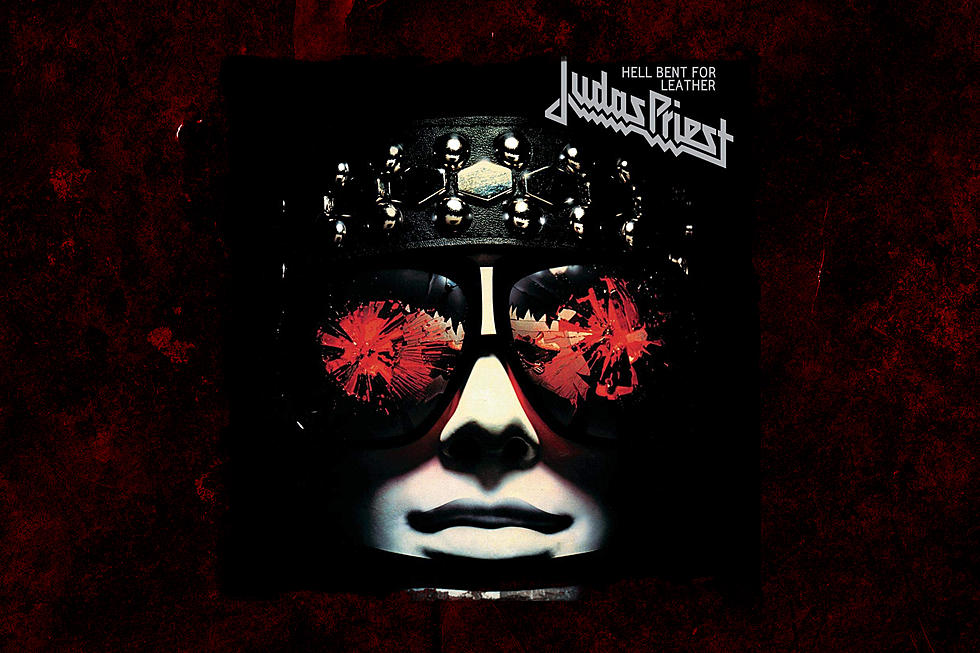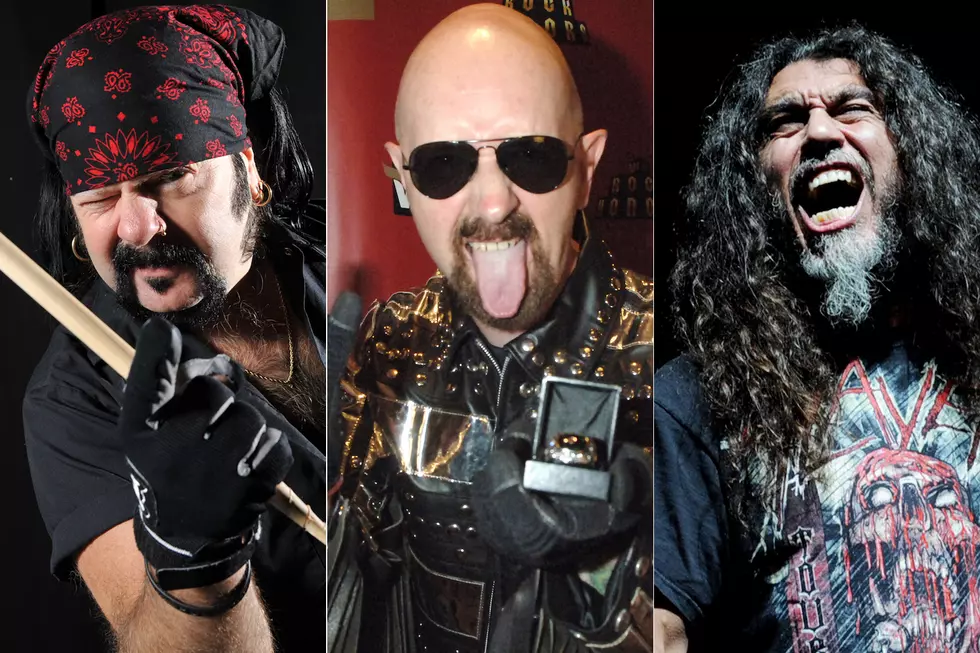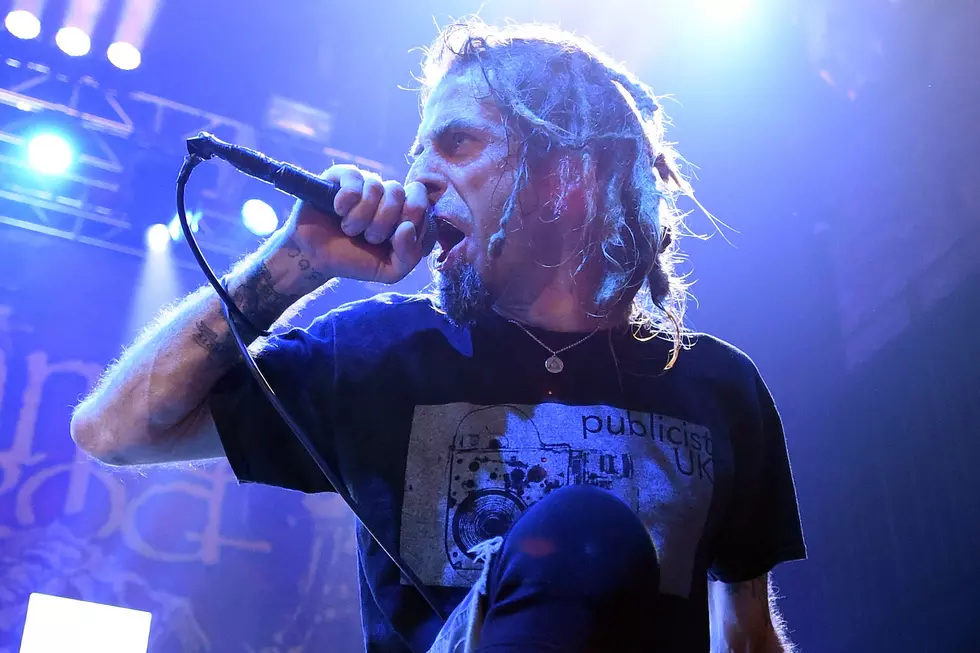
40 Years Ago: Judas Priest Release ‘Hell Bent for Leather’
In early 1978, Judas Priest released Stained Class, an album that found them moving away from the look and sound of their early influences: Black Sabbath, Deep Purple, Led Zeppelin and Jimi Hendrix. The hippie gear and denim were being replaced with all leather and studs, while the psychedelic blues jams were being distilled into a sleeker, heavier sound. They were no longer an up-and-coming new band; Judas Priest were now leaders of a new movement.
Related: Judas Priest's Stained Class - The Album That Redefined Heavy Metal
Just a few months later, on Oct. 9, 1978, Priest returned with the follow-up, Killing Machine (released shortly after in the U.S. as Hell Bent for Leather). It's far from a perfect album and it's far from their best, but it is a pivotal moment for the band and for heavy metal. It's the album where they further refined their look and sound. The title track is a rallying cry for the genre, and to this day, fans are still thrilled to see Rob Halford ride onto the stage on his motorcycle when the band plays the song live. The leather-clad frontman on a Harley-Davidson remains one of metal's most iconic images.
Despite the title track's abrasiveness, Hell Bent for Leather has been criticized by some fans for having too much of a streamlined -- or "commercial" -- sound, as if trying to get played on the radio is a bad thing. Judas Priest were never an elitist band, and they clearly wanted to invite new fans to the party. After all, Sabbath, Purple, Zeppelin and Hendrix were all great because they experimented, not because they stuck with a specific sound, and they all became superstars because they had songs on the radio. That's something that Judas Priest clearly wanted, along with cultural relevance.
Rob Halford always has his ear to the ground, within the genre and outside of it. He always knows who and what is relevant, and by the late '70s, culture was changing. The punk movement made sprawling blues jams and epic progressive rock seem obsolete; sci-fi and fantasy based epics about good and evil were falling out of favor. Streamlined (and shorter) songs with more personal lyrics resonated more, especially on the radio. By the end of the decade, FM radio was becoming more tightly programmed. Priest reacted and tried new approaches to their sound. It didn't always work: the keyboard-driven ballad "Before the Dawn" was an excellent showcase for Halford's vocal range, but not very interesting as a song. "Take on the World" was a bit too obviously close to Queen's "We Will Rock You." But there were more hits than misses.
"Rock Forever" was a blues-based number, but it was the economical ZZ Top variety of blues, not the extended jammy sound of Zeppelin or Purple. "Burnin' Up" sounds like something Aerosmith might have come up with, and should have been a radio hit. Priest even tightened up the Peter Green-era Fleetwood Mac gem "The Green Manalishi (With the Two-Pronged Crown)."
Hell Bent for Leather's highlights, though, are the title track and "Running Wild," which continued down the path blazed by the prior album's "Exciter." These songs would be incredibly influential on the New Wave of British Heavy Metal (notably Iron Maiden), the "Big Four" of thrash metal -- Metallica, Slayer, Megadeth and Anthrax (the latter of whom paid tribute on their 2011 song "Judas Priest") -- and a number of bands in the decades since, including Pantera, Five Finger Death Punch, Slipknot and Ghost.
Metal is a subculture, most bands dream of world domination. Some, like Metallica and Iron Maiden, actually achieve it. Would Judas Priest be as enduringly popular as they are without radio-ready songs like "Heading Out to The Highway," "Living After Midnight" and "You've Got Another Thing Comin'"? To put it another way: Would Metallica be as big without "Enter Sandman" and "Nothing Else Matters"? Unlikely. Priest's road to straddling the mainstream and the metal subculture starts on Hell Bent for Leather.
It's ironic that the album that defined the look, the sound and possibilities of an entire subculture is turning 40 on the day that the Rock and Roll Hall of Fame issues its 2019 ballot ... which ignores Priest (along with Slayer, Pantera and a number of other deserving artists). With all due respect to other recent inductees, it's a bit difficult to pinpoint the impact of some of the artists who have been voted in over the past decade. Would music be notably different if you somehow removed, say, the Dire Straits from the timeline? What about the Hollies? Donovan? Are there a lot of artists who cite the Lovin' Spoonful as being life-changing? There certainly have been a lot of bands who might not exist -- or would be radically different -- if not for Priest. As Tom Morello (who is on the ballot as a member of Rage Against the Machine) said in his speech about KISS at the Rock and Roll Hall of Fame induction ceremony in 2014, "While there is a often debate about who should and shouldn’t be in the Rock and Roll Hall of Fame, I think the criteria are actually quite simple: impact, influence and awesomeness." Whether or not you like Judas Priest, you surely can't deny their influence, and Hell Bent for Leather is an essential part of their very influential legacy.
33 Hard Rock + Metal Acts Who Deserve to Be in the Rock and Roll Hall of Fame
More From KZCD-FM










